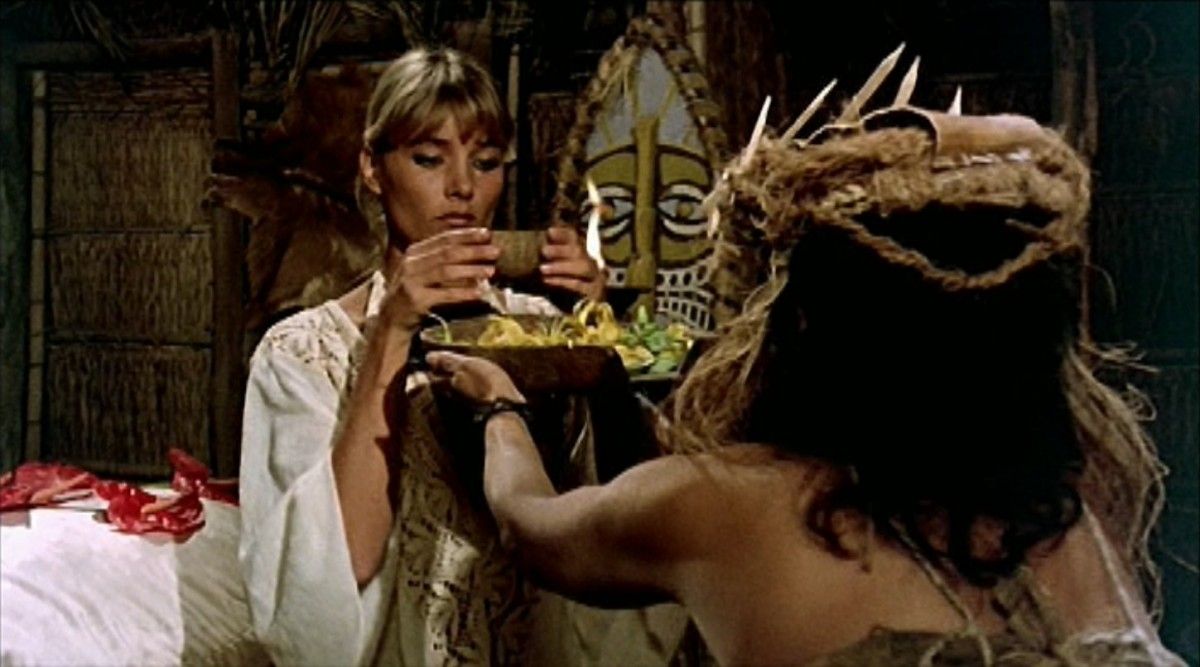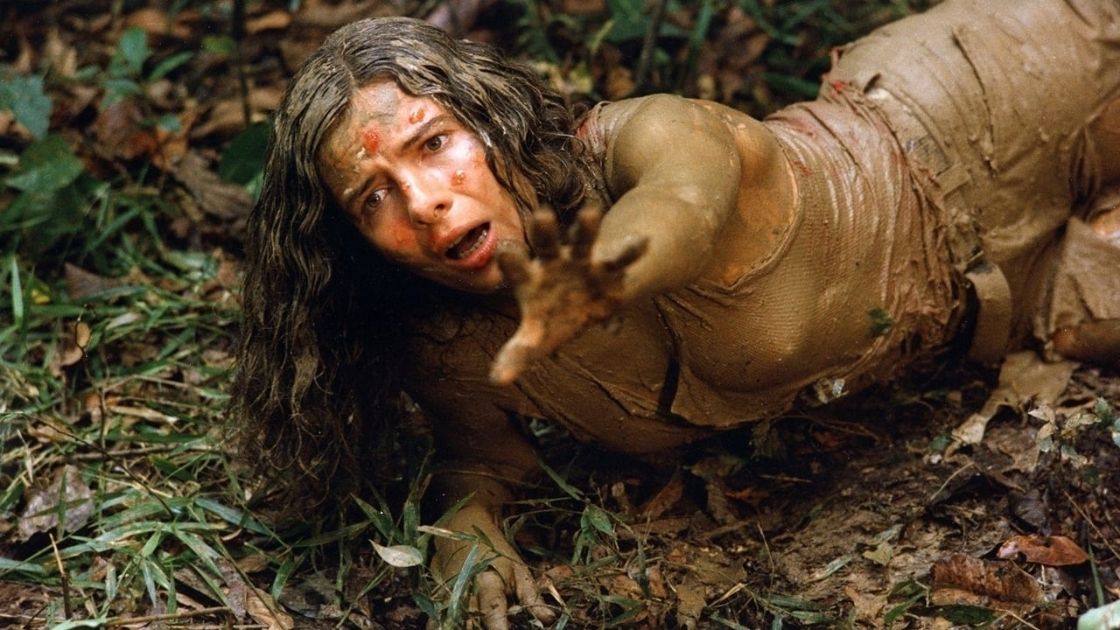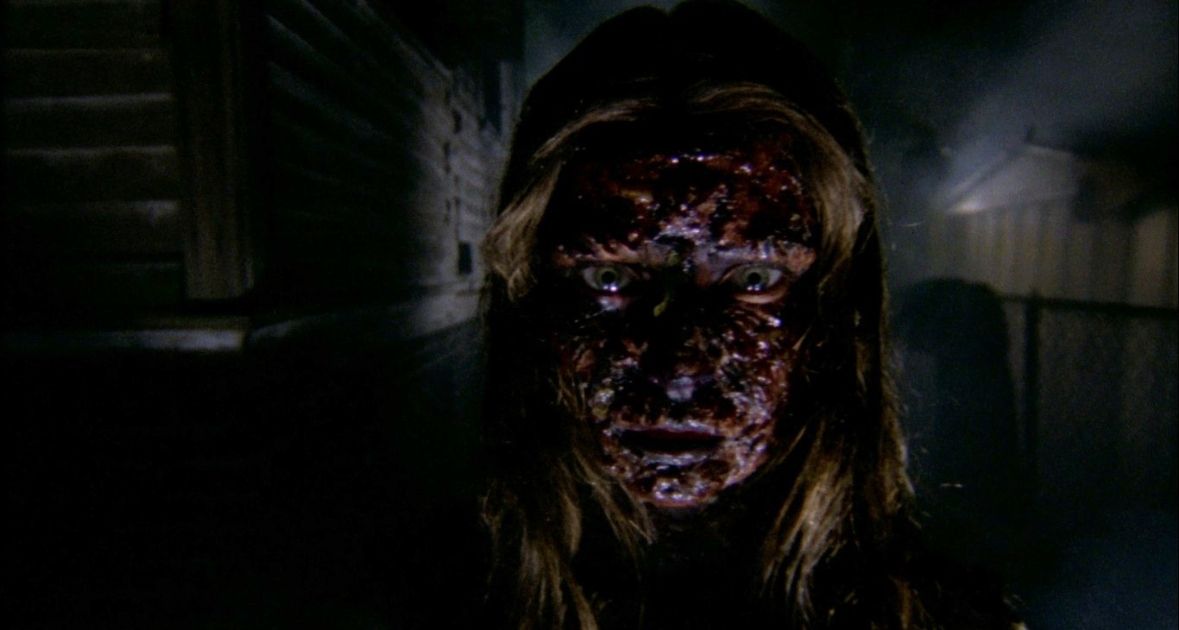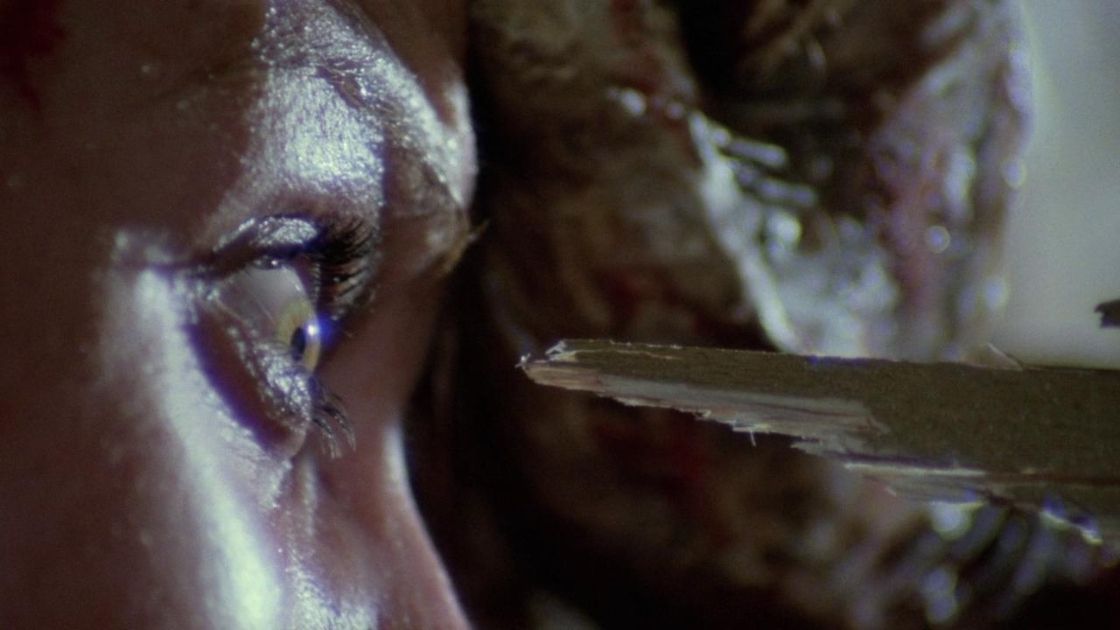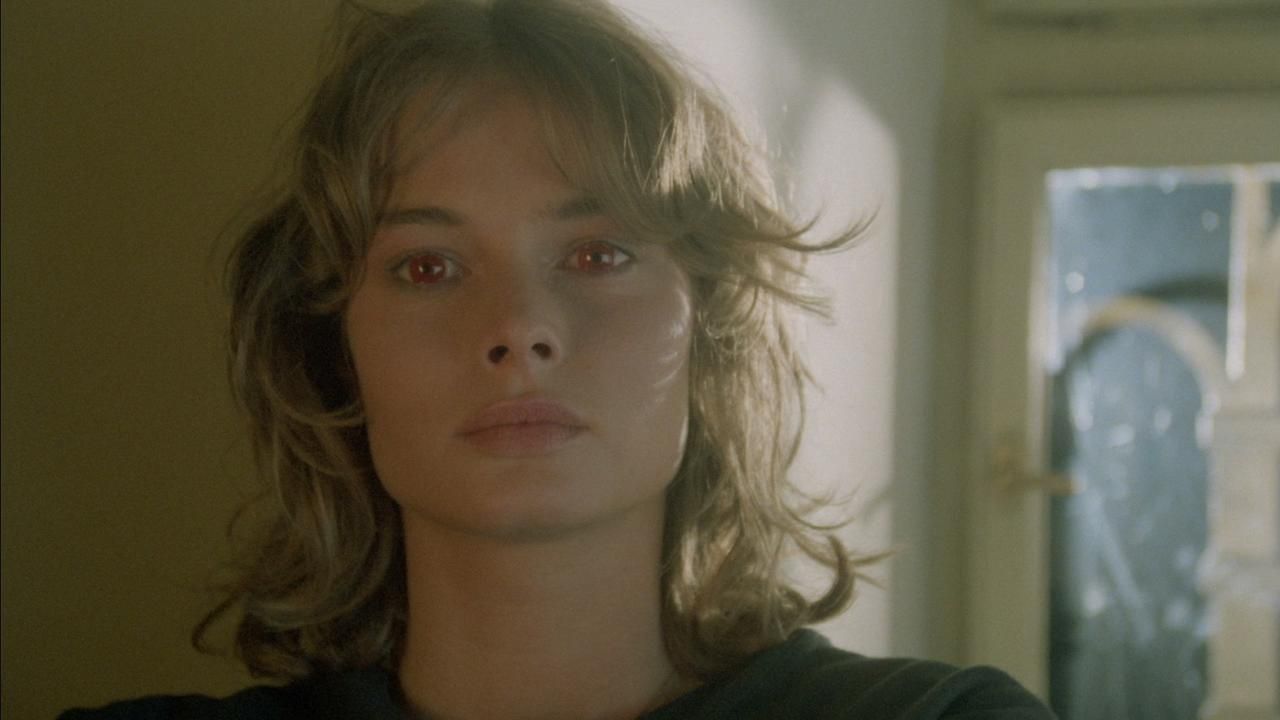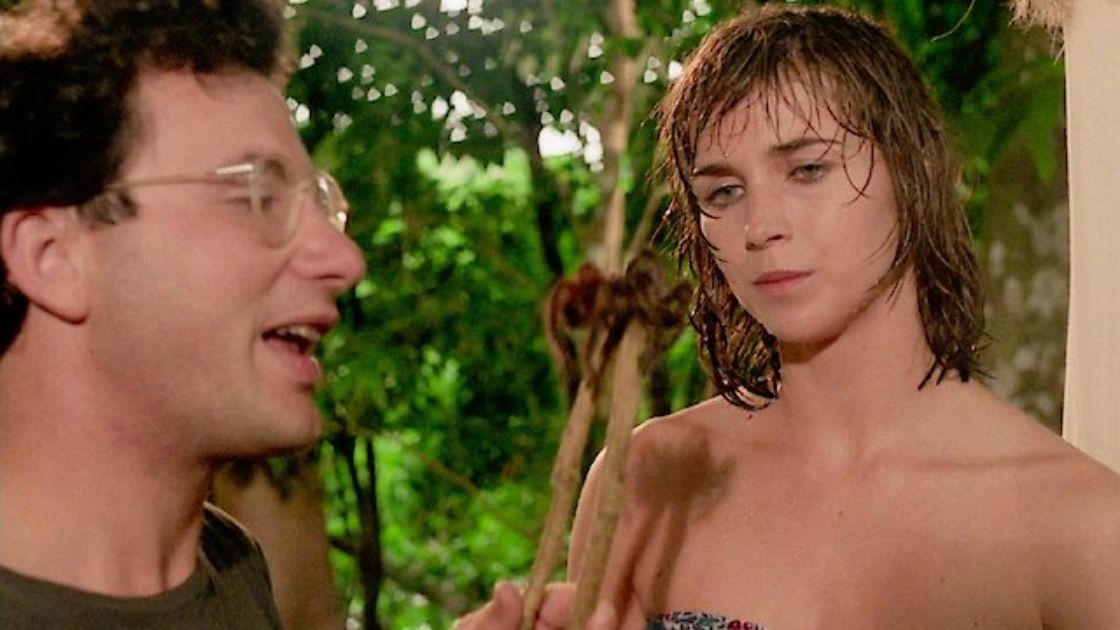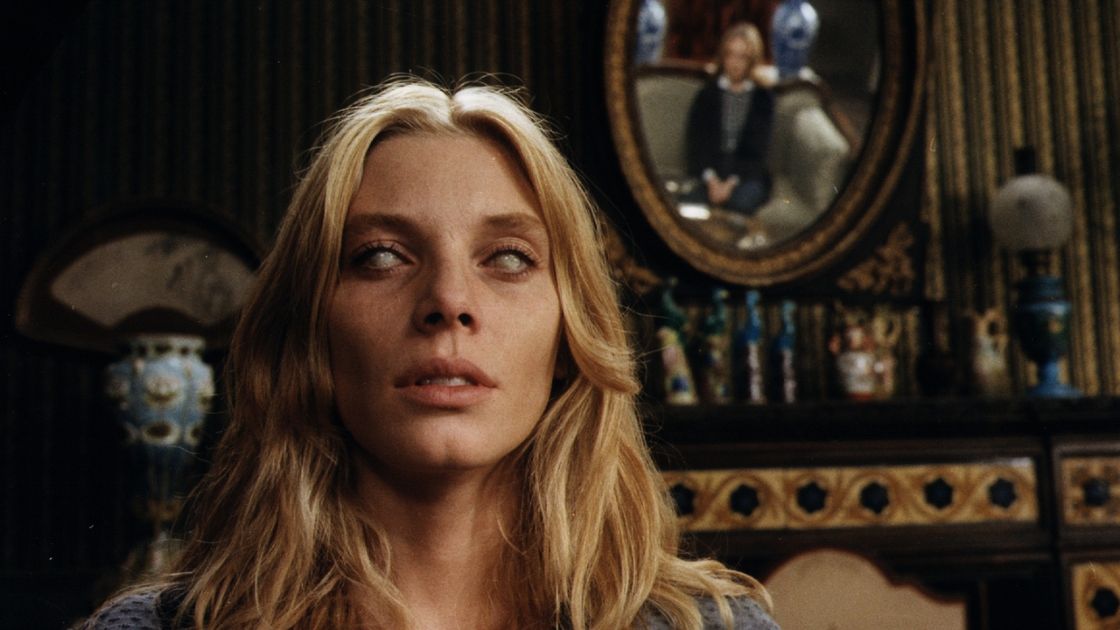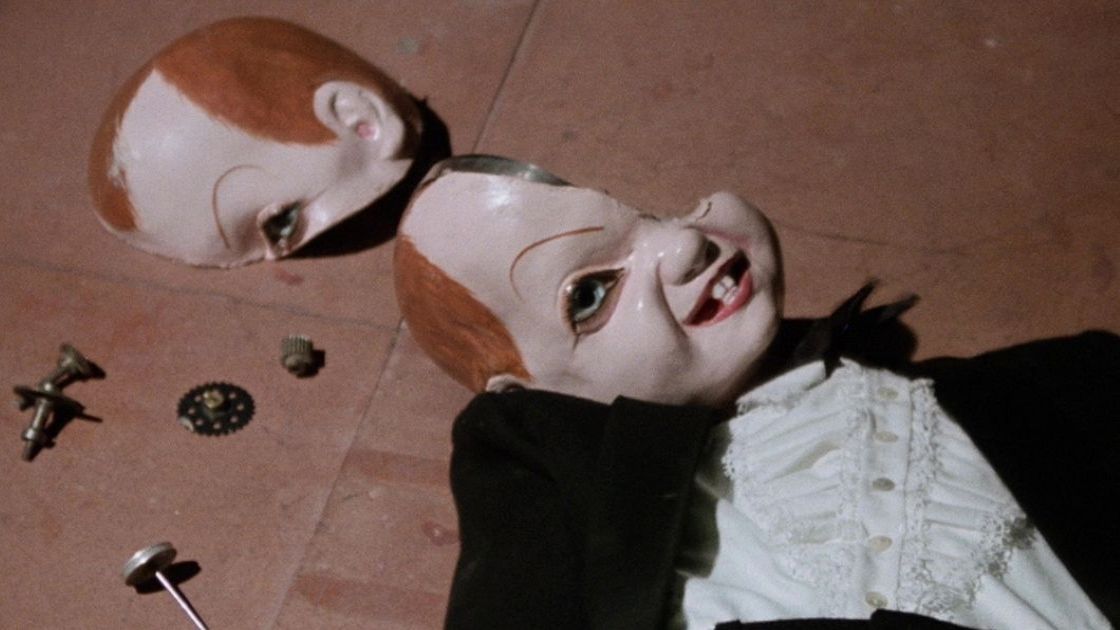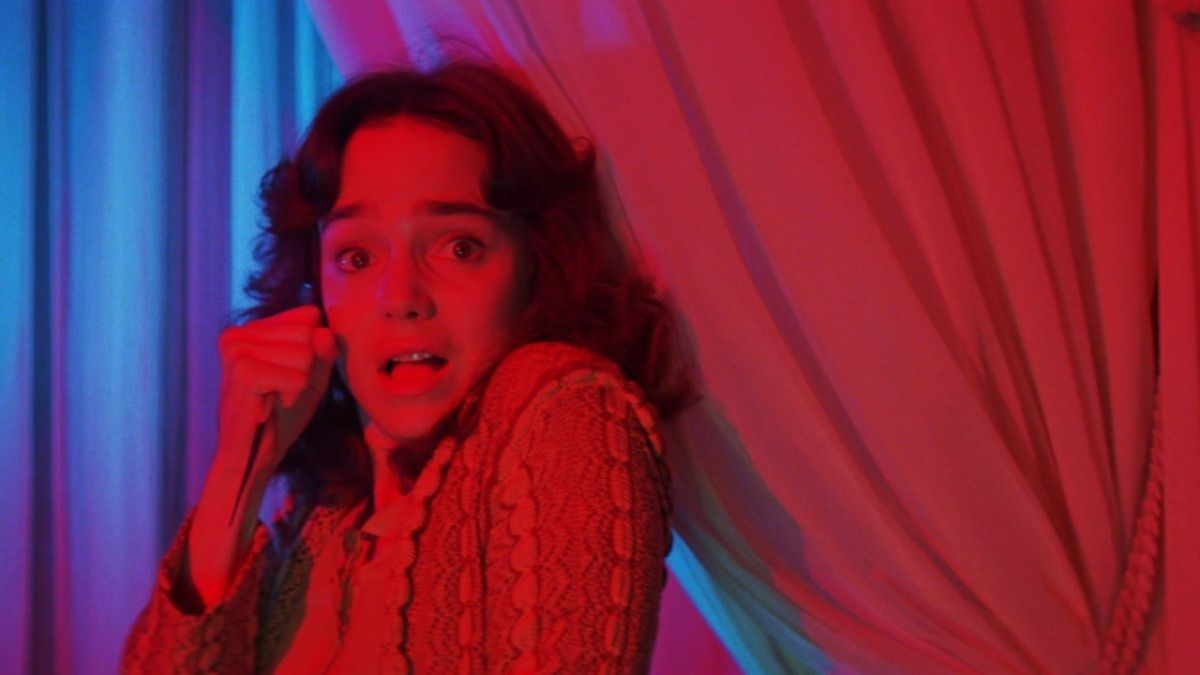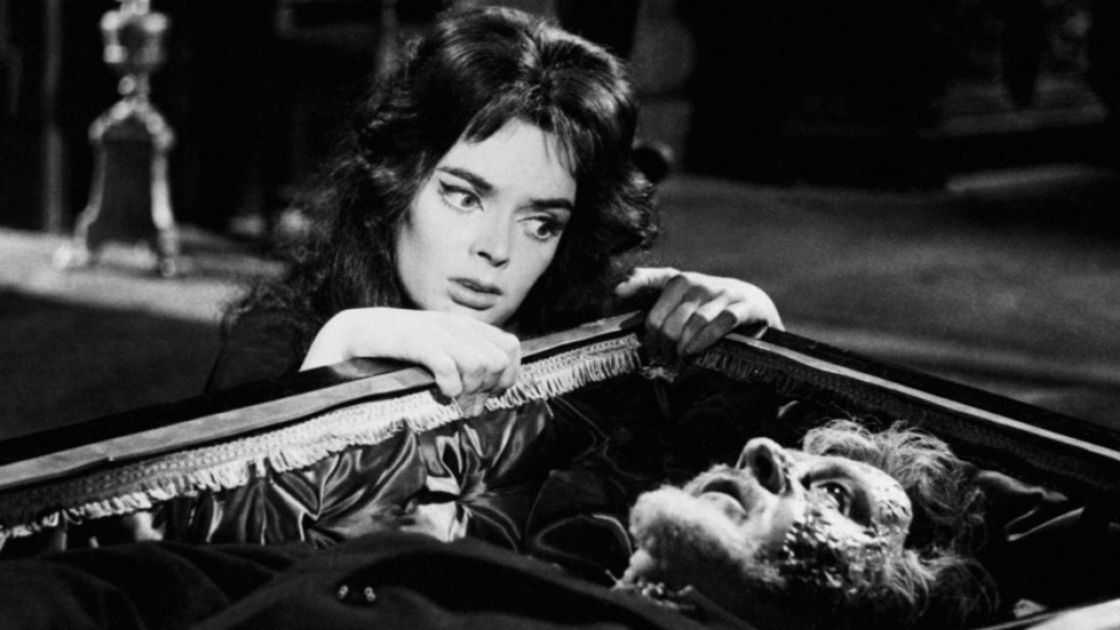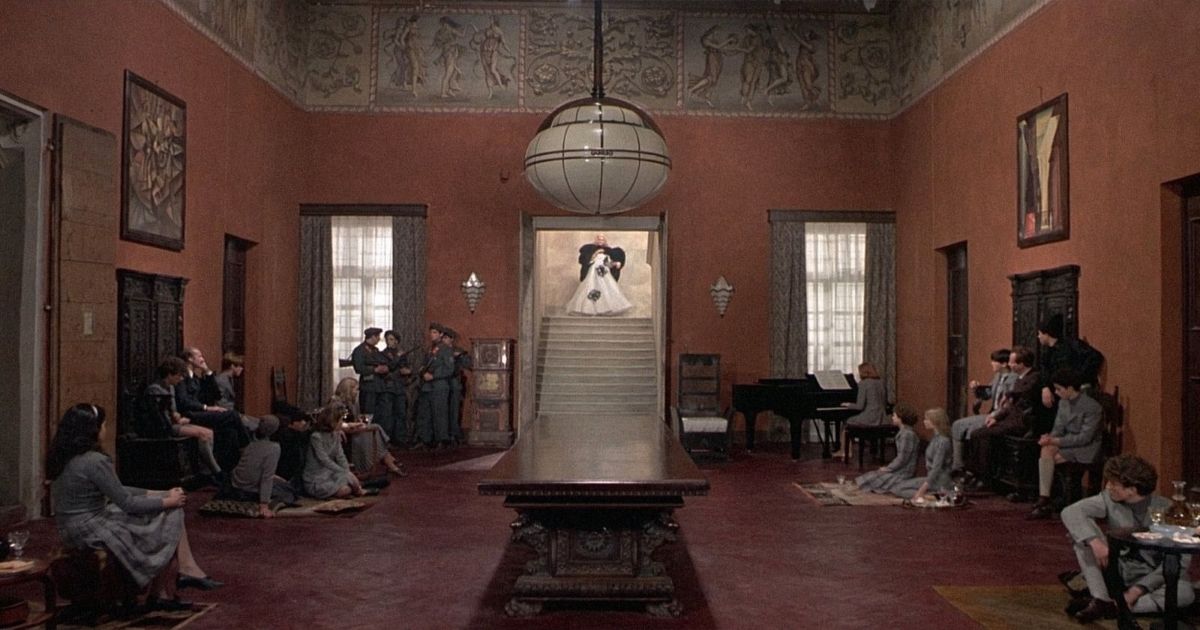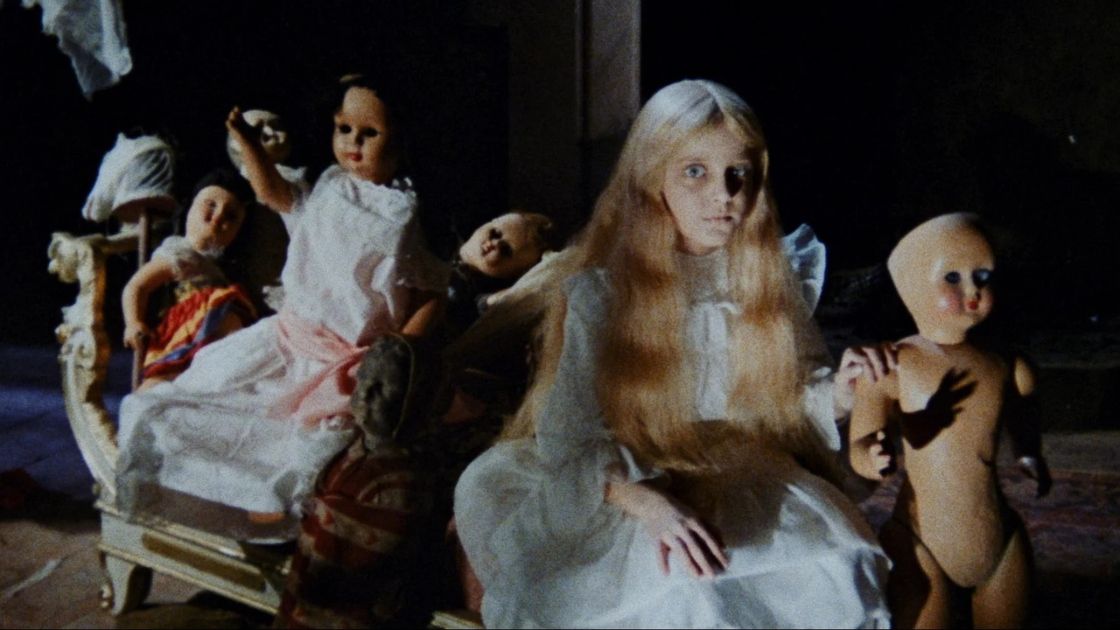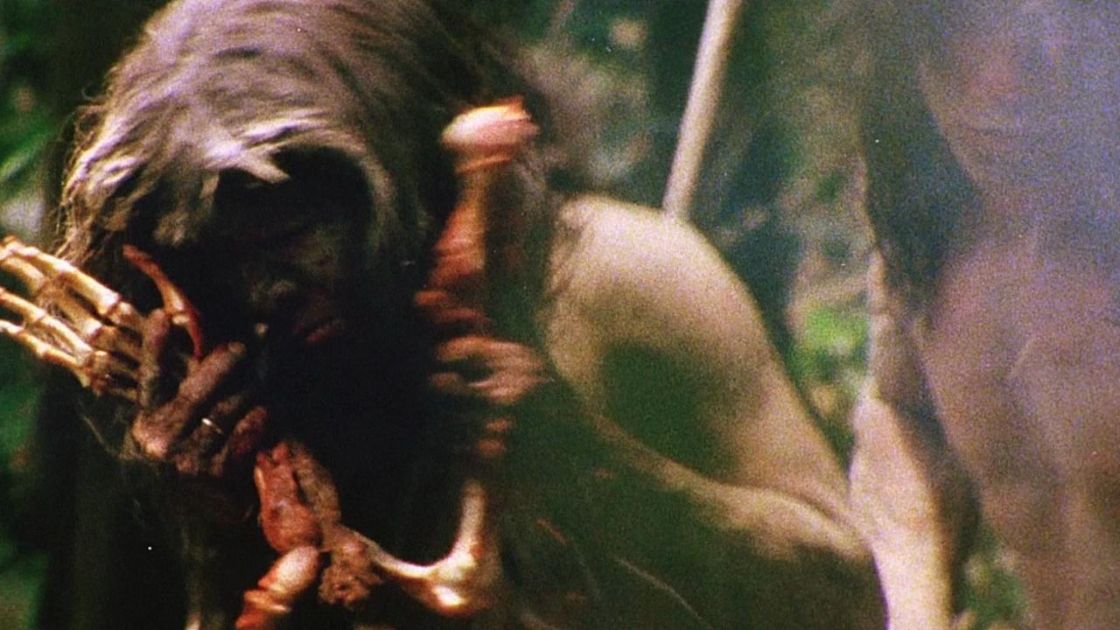Loose on plot and dripping with colorful heaps of gore, Italian horror movies might be a shock to the system for those used to the darker palettes of their American or Japanese horror counterparts. Quality certainly varied in the most infamous of these flicks, but there was no denying their influence and controversy. Italian horror reached saturation in the 1970s and 80s, dubbed the "cannibal boom." This bloodthirsty frenzy of low-budget films drew on the success of sleazy "mondo" films, "shockumentaries," and often-banned "video nasties" that sprung up in the 1960s which focused on the supposed immorality of cultures of the Southern Hemisphere, featuring real and staged footage of dying people and animals.
Umberto Lenzi's 1972 film, The Man from Deep River was considered the first to succumb to the man-eating mania. Others, like Jungle Holocaust, began to up the ante. The setups for the cannibal boom films were often repetitive — an unknowing westerner travels from the urban jungle of New York to a remote one in Asia or South America and is inevitably captured by a vicious tribe, witnessing a litany of atrocities before he dies or escapes.
Critics of the subgenre recognized its offensive undertones, idealization of white colonialism, and reliance on stereotypes, while its stronger entries attempted to critique these very same values. Countless American and European horror films soon adapted their own horrific versions of cannibalism, from The Hills Have Eyes to Silence of the Lambs. The terror of the trope persists, with the recent horror-comedy Fresh translating the theme to the harrowing world of modern dating.
Italian horror's infamy didn't just stop with cannibalistic thrills — for one, there was a sizable surge in zombie films in the same time period. Plus, Italian horror's 60s roots were in visually striking gothic pictures spearheaded by Mario Bava. Some of the most impressive entries came in a subgenre called gialli (giallo, singular), or "yellows," a type of Italian horror/thriller popularized by Dario Argento that usually fused detective mystery elements to eroticism and slasher tropes. Despite these seemingly disparate subgenres, there were countless similarities — like the penchant for unflinching bloodbaths and frequent scoring from punk-horror icons, Goblin.
Now, let's take a look at some of the most infamous films of the genre. Don't worry, there's something for everyone: from cannibals to zombies to plain old murder.
13 Eaten Alive!
In this Umberto Lenzi cannibal gross-out film, a woman looks for her sister in the dense jungles of New Guinea, only to find a slew of unimaginable horrors. These include a Jonestown-esque religious cult and vicious cannibals lurking in the brush. As you can tell from the title, some of the film's most disturbing content centers on the brutal cannibals, who don't necessarily make sure their victims are unconscious before digging in. While the ritualistic consumption of the dead by some tribes in New Guinea has been documented, it's important to note that the particular brand of vicious, predatory cannibalism of Eaten Alive! is mostly a xenophobic, sensationalist invention influenced by Western ethnocentrism.
12 Cannibal Ferox
Also known as Make Them Die Slowly, Cannibal Ferox is one of Umberto Lenzi's most notoriously twisted cannibal flicks, giving the others a run for their…guts. The film directly confronts the criticisms of the cannibal genre by casting an anthropologist (Lorraine De Selle) who is writing her dissertation on how cannibalism is a colonial fiction, then discovers otherwise when she travels to the Amazon to complete her research and she and her friends get caught up in the natives' plot for revenge. Its memorable gore moments, including one live (and unfortunately unforgettable) brain-eating scene and assorted amputations, make it one of the subgenre's most disturbing.
11 City of the Living Dead
All bloody hell breaks loose (literally) in this zombie gore-fest from Lucio Fulci. When a priest commits suicide, the gates of hell open and an army of the dead is set loose. It's effects-laden and visually gutsy but light on plot and oftentimes laughably irrational, though it makes up for this in thrills. City of the Living Dead was part of Fulci's Gates of Hell trilogy, the film was heralded for its stunningly shot horror sequences, with one in particular involving bleeding eyes and organs being puked up. Appetizing, right?
10 Zombi 2
No zombie is quite as grotesque as those from the imagination of Lucio Fulci in his spiritual sequel to horror classic Dawn of the Dead. Zombi 2 has a familiar setup to the cannibal boom movies: Anne Bowles travels from New York to a remote Caribbean Island after her father's boat turns up from a research trip empty. Gory hell ensues when they discover the island is under a voodoo curse that allows the dead to rise. The zombie film became a cult favorite for its brutal and detailed FX, complete with an infamous zombie eye full of worms.
9 Aenigma
Shades of American horror classic Carrie haunt this film from Lucio Fulci about an outcast girl in a coma who possesses a new student to get her bloody revenge on the cruel classmates that put her in the hospital after a prank gone wrong. Those who love a good, bloody revenge film are bound to get some enjoyment from Aenigma, though its plot isn't exactly bursting with originality. It remains an infamous classic of the genre for its inventive death scenes and fondness for loads of blood, as all Fulci films seem to have.
8 Natura Contro / AKA The Green Inferno or Cannibal Holocaust II
Considered one of the last films of the Italian cannibal frenzy, Antonio Climati billed Natura Contro as a follow-up to Cannibal Holocaust, hoping to capitalize on the original's controversy (not to be confused with a 2014 American follow up by Eli Roth, The Green Inferno). It follows a party of friends hoping to locate their lost professor in the dense Amazon. While considerably less cannibalistic than its predecessors, it's still not exactly a Sunday stroll — unless your Sunday stroll includes genital-hungry reptiles. Fun fact: it's not the only movie released as Cannibal Holocaust II; that honor also belongs to the notorious White Slave (The Catherine Miles Story).
7 The Beyond
Another classic from the notorious Lucio Fulci, this one lives up to the director's reputation, told in the language of blood, guts, and uniquely disturbing visuals. Set in the American South, The Beyond centers on an unlucky woman who happens to inherit a house sitting smack dab on top of the gates to hell. If you have a fear of spiders, you may want to avert your eyes (and ears) from the infamous minutes-long tarantula scene, which involves more blood and screeching noises than you would expect. If you are squeamish at all, you may want to skip this bloody outing entirely.
6 Deep Red
A horror classic from the great Dario Argento, Deep Red is most infamous not for its zombies or cannibals, but its taut suspense, thrills, and visuals. As in Suspiria and other Argento classics, color plays a large role in setting the mood for the film. A classic giallo whodunit, the film follows a pianist investigating his neighbor's murder. Among its many iconic moments are some gruesome murder sequences shot from a first-person POV. It's among the best of the director's impressive portfolio of giallo and horror movies, including Bird With The Crystal Plumage, Cat O' Nine Tails, and of course: Suspiria.
5 Suspiria
Suspiria is arguably more famous than infamous, having earned a beloved place in the canon of international horror films. The first film in Argento's "Three Mothers" trilogy, it tells the story of Suzy, an American ballerina who arrives at a prestigious dance school in Germany only to discover it's actually a coven. Forced to contend with the evil forces who want her dead, Suzy fights for her life. Shot beautifully in vivid, psychedelic color, the way this film blends thrills and fear with visual wonder remains unparalleled. Out of all of its Goblin-scored counterparts, the film's synthy score remains the band's greatest success. Inventive in every sense of the word, Suspiria changed the way audiences saw horror (and dance academies!) forever, remaining among the best horror films ever made.
4 Black Sunday
This black and white film from Mario Bava notoriously introduced the unique visions of Italian horror to a global audience, foreshadowing a decades-long horror boom that saw the country dictate trends and push boundaries. Shot in true gothic style, Black Sunday follows a witch who awakes from the dead centuries after her brutal execution, determined to carry out her promise of revenge. A masterpiece in set design and cinematography, Bava's debut success established him as a masterfully terrifying visionary. He went on to release some incredibly influential early gothics and giallos including The Girl Who Knew Too Much, Black Sabbath, and the sci-fi Planet of the Vampires, considered the precursor to Ridley Scott's monumental Alien.
3 Salò, or the 120 Days of Sodom
Sickening, horrifying, gut-wrenching — Salò, or the 120 Days of Sodom was banned in many countries upon its release (and in Australia as recently as 2010). It might just take the poop-cake for most nihilistic film of all time. Director Pier-Paolo Pasolini was tragically murdered just weeks before the film's release in 1975, but this was only the tip of the hulking iceberg of controversy that accompanied Salò. The plot is simple enough — four wealthy fascist Italian elites kidnap a group of teenagers and subject them to all manner of horrors including torture, sexual abuse, and the nastiest dinner ever. Audiences and governments called its senseless violence intolerable, though many critics still praise it as one of the most convincing critiques of fascism to ever play on the screen.
2 Kill, Baby…Kill!
Regarded as Mario Bava's best film by respected directors like Coppola and Scorcese, Kill, Baby…Kill! has influenced the work of many films to follow it. When Paul (Giacomo Rossi-Stuart), a straight-faced doctor, stumbles across a mysterious murder, his sights quickly turn to the mysterious girl who seems to be haunting the townspeople. The film is full of powerful imagery that contrasts the barren hospital interior with the wild, supernatural exterior, embodied by a protective local witch (Fabienne Dali) and an inventive narrative that blends elements of giallo and gothic horror in a pitch perfect spiral into psychological terror.
1 Cannibal Holocaust
One of the most controversial movies of all time, Cannibal Holocaust blurred the line between entertainment and real-life brutality. In fact, director Ruggero Deodato was charged with murder after its release. Credited with innovating the found footage genre, it brought realism to the world of horror, following a documentary crew that has gone missing in the Amazon on their hunt for a cannibal tribe. There is enough cruelty and violence in this frightening film for about 500 others, including real scenes of animal death and cruelty interspersed with staged human ones (at the time, many claimed these were real, too).
If you watch Cannibal Holocaust at all, it will probably be through your fingers. The horrors of Deodato's imagination are set to return in 2022 in video game form with Borneo: A Jungle Nightmare. Deodato will be at the helm, writing a spiritual follow up to his original shocker over 40 years after its original release.


